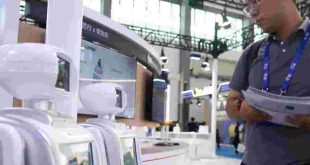Introduction to Tesla and the Cybercab announcement
Tesla, the automotive darling of Wall Street, has once again made headlines with its latest announcement. The unveiling of the Cybercab robotaxi is sparking conversations about the future of transportation and Tesla’s place in it. As excitement builds, investors are left wondering how this groundbreaking vehicle will affect Tesla’s stock price. With safety concerns looming large over autonomous vehicles and a rapidly evolving market landscape, all eyes are on this ambitious venture into the world of robotaxis. What does this mean for both Tesla and its customers? Let’s dive into what makes the Cybercab noteworthy and explore its potential impact on an already buzzing industry.
What is a Cybercab robotaxi?
The Cybercab is Tesla’s latest innovation in the realm of autonomous transportation. Designed to function as a robotaxi, it aims to redefine urban mobility.
Equipped with cutting-edge AI technology, the Cybercab operates without a human driver. Passengers can summon it via an app, making rideshare services more accessible and efficient.
The interior boasts spacious seating and advanced safety features. These are crucial for addressing growing safety concerns surrounding autonomous vehicles.
One of its standout capabilities is real-time route optimization. This allows for quicker travel times by adapting to traffic conditions instantly.
Tesla envisions that these robotaxis will be integrated into their existing fleet, further expanding their service offerings. With this move, they hope to solidify their position in the competitive state of the robotaxi market.
How will the Cybercab impact Tesla’s stock price?
The unveiling of the Cybercab certainly stirred up excitement in the market. Investors are keenly watching how this new venture will shape Tesla’s future.
Some analysts suggest that the introduction of a robotaxi could lead to increased revenue streams. If successful, it might position Tesla as a leader in an evolving sector. The potential for autonomous ridesharing is significant.
However, uncertainty looms large. Safety concerns could hinder widespread adoption and affect investor confidence. If customers hesitate to embrace this technology, stock prices may remain volatile.
Additionally, competition is fierce within the robotaxi landscape. Other companies are also racing to dominate this space, which can impact Tesla’s perceived market share.
Market reactions have been mixed so far, reflecting both optimism and skepticism among investors regarding long-term profitability from the Cybercab initiative.
The potential benefits of the Cybercab for Tesla and its customers
The Cybercab robotaxi could redefine urban mobility. With autonomous driving capabilities, it promises a seamless travel experience for passengers. Imagine hailing a ride without the need for human drivers.
For Tesla, this innovation opens new revenue streams. Increased demand for ride-hailing services means more vehicles on the road and higher utilization rates. This shift can bolster profitability significantly.
Customers stand to gain from lower transportation costs too. A fleet of Cybercabs could provide affordable rides compared to traditional taxis or personal car ownership.
Safety concerns remain paramount in discussions around robotaxis. However, Tesla’s commitment to advanced safety features reassures potential riders about their well-being during transit.
Environmental benefits are also notable. Electric-powered Cybercabs contribute to reduced emissions while promoting sustainable transportation solutions within cities bustling with traffic.
Criticisms and concerns surrounding the Cybercab reveal
The unveiling of Tesla’s Cybercab has sparked a wave of skepticism. Many analysts are voicing safety concerns that can’t be ignored. The autonomous nature of the robotaxi poses questions about reliability and accident rates.
Critics argue that Tesla is playing catch up in a rapidly evolving robotaxi market. Several competitors have already launched successful autonomous services, raising doubts about whether Tesla can keep pace.
Moreover, environmental factors come into play. Concerns grow over how these vehicles will perform in various weather conditions or challenging urban terrains.
Additionally, some potential customers worry about job displacement for drivers as cities gradually adapt to this technology. Public sentiment remains mixed at best; many remain unsure if they trust such an advanced system yet.
These criticisms will likely shape public perception and investor confidence as the rollout date approaches.
Analyzing the market response to the news
The announcement of the Cybercab has generated a mixed response in the market. Investors initially reacted with enthusiasm, hoping this innovation could revitalize Tesla’s stock after recent fluctuations.
However, as details emerged, skepticism crept in. Concerns about safety issues surrounding autonomous vehicles have resurfaced. Potential buyers are wary of jumping into an unproven technology that might not meet expectations.
Analysts noted that competitors like Waymo and Cruise have already established a foothold in the robotaxi space. Many believe Tesla is playing catch up rather than leading the charge.
This landscape leads to uncertainty for shareholders. The volatility reflects broader concerns about how quickly Tesla can navigate regulatory hurdles while ensuring passenger safety within its fleet of Cybercabs. As these dynamics unfold, investors will be watching closely to gauge whether consumer confidence revitalizes or further dampens prospects for Tesla’s future growth.
Conclusion and future outlook for Tesla with the Cybercab in mind
The future of Tesla appears to be at a crossroads with the introduction of the Cybercab. As the electric vehicle giant pushes deeper into the robotaxi market, it faces both opportunities and challenges. The potential for increased revenue streams and enhanced customer experiences is significant. However, lingering safety concerns could hinder widespread acceptance and regulatory approval.
Investors are closely watching how these developments unfold, as they will play a crucial role in determining Tesla’s stock trajectory in an ever-competitive landscape. With industry giants like Waymo and Cruise already making strides in autonomous vehicles, there’s a sense that Tesla may need to accelerate its efforts or risk playing catch up.
The state of the robotaxi market continues to evolve, with various players jockeying for position amidst technological advancements and societal shifts towards shared mobility services. How well Tesla navigates this environment could dictate not only its success but also influence broader trends within the automotive sector.
As we observe how consumers respond to offerings like the Cybercab, it will become clearer whether this innovation solidifies Tesla’s status as a leader or presents new hurdles that must be overcome. The coming months promise to be pivotal for both Tesla and its stakeholders as they adapt to changes within this dynamic marketplace.
 Clicksud
Clicksud


